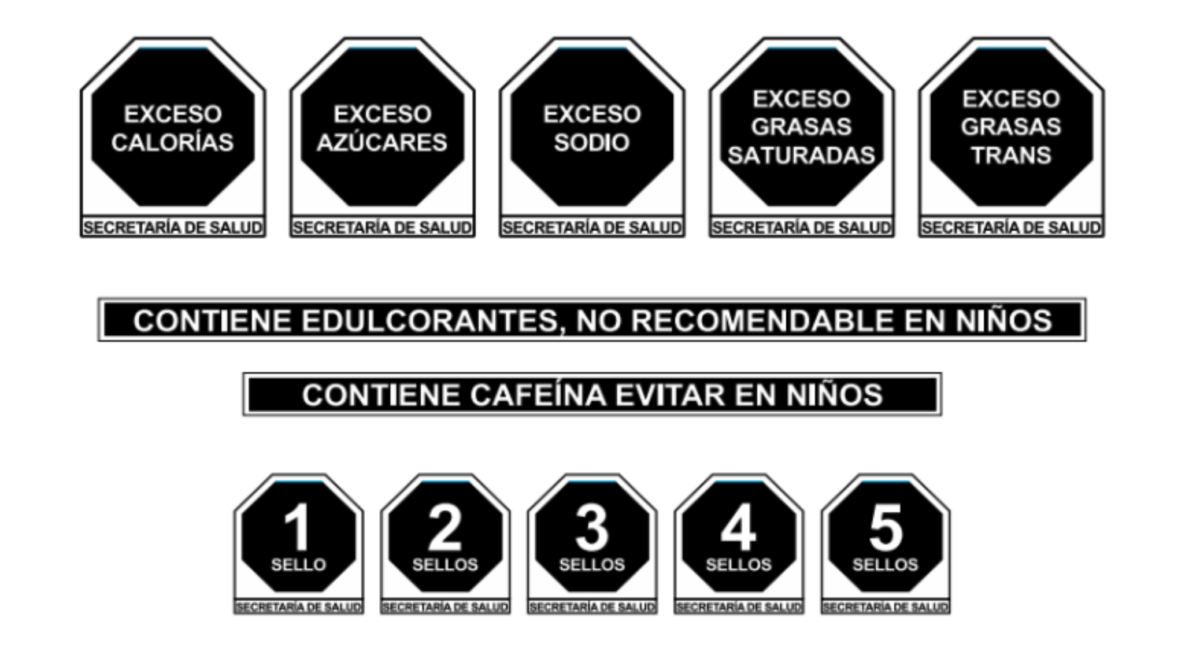Understanding Nutrition Labels in Latin America
Written by: Beyond Type 1 Editorial Team
5 minute read
August 19, 2024
Traveling while living with diabetes can be quite stressful, especially when you are faced with new foods and types of nutrition labeling. Here, we go over some things that you should keep in mind about carb counting and the front-labeling system implemented in several Latin American countries. We hope that this information is useful for your next trip, helps you make better choices concerning food, and helps you learn some more about understanding nutrition labels in Latin America
Carb Counting in Latin America
Food labeling in Latin America is essential for carb counting but can vary between countries. Several countries in the region have guides that show the nutritional composition of foods:
- In Brazil: “Tabela Brasileira de Composição de Alimentos”
- In Colombia: “Tabla de Composición de Alimentos Colombianos”
- In Chile: “Tabla de Composición de Alimentos Chilenos”
- In Mexico: “Sistema Mexicano de Alimentos Equivalentes”
Because of this, a common food, such as white bread, is described with a slightly different approach to carb counting in the Brazil, Colombia, Chile, and Mexico guides:
- In Brazil: A 100-g serving of white bread contains approximately 50 g of carbohydrates.
- In Colombia: According to the Tabla de Composición de Alimentos Colombianos, 100 g of white bread contain around 55 g of carbohydrates.
- In Chile: The Chilean guide indicates that 100-g of white bread contain around 63 g of carbohydrates.
- In Mexico: In Mexico, 100-g of white bread contain approximately 53 g of carbohydrates.
In reality, food labels can differ in carb content from country to country due to variations in how they are measured or described. You can learn more about how to read a label here.
A Guide to Understanding the Frontal Seal System
Between 2016 and 2024, countries such as Argentina, Bolivia, Brazil, Chile, Colombia, Ecuador, Mexico, Peru, Uruguay, and Venezuela have applied a frontal seal system, aiming to address the increasing overweight and obesity in their populations.
Front labeling aims to reduce the consumption of processed foods by presenting visible, clear, large, and impactful seals that warn about “EXCESS” of “calories,” “sugars,” “sodium,” “fats,” “trans fats,” and/or “saturated fats.”
The values taken into consideration were obtained from the Pan American Health Organization and the World Health Organization.
Currently, these are the criteria for stamp placement in Argentina, Chile, Peru, Uruguay, and Mexico:
Although, generally, the front labeling in the Latin American countries that have implemented this measure are similar, they do have some differences. Some examples below:
| Calories | ≥275 kcal
(Except Peru, which does not have a seal for kcal) |
| Sugars | ≥10% total |
| Saturated fats | ≥10% total
(Except Chile (≥4%) |
| Fats | ≥ 30% total |
Argentina
In 2021, the No. 27,642 law was applied, “Promoción de la alimentación saludable” (“Promoting healthy eating).” The Argentine government implemented octagonal front warning labeling. You can identify it as follows:

Brazil
In 2022, Brazil applied the RDC Ruling No. 429/2020, “Resolução da diretoria colegiada.” Front-of-pack nutrition labeling in Latin America and the Caribbean states that products that exceed the limits for added sugar, saturated fat, and sodium per 100 milligrams or 100 milliliters must include black rectangles with a magnifying glass and the text “ALTO EM” (“HIGH IN”).

Venezuela
In 2021, the Ministerio del Poder Popular para la Salud (Ministry of Popular Power for Health) published Ruling No. 137, starting the change to front labeling that was implemented in 2022.

Mexico
In 2019, Mexico implemented front labeling through the NOM-051-SCFI/SSA1-2010 rule.
This labeling’s purpose is to inform the public of the critical amount of some ingredients that can harm their health.
It also implemented warnings about the content of caffeine and sweeteners, and about how it is not recommended for children to consume these foods. You can find the different warnings indicated as follows:

The Bottom Line
Knowing nutrition labeling and how it varies in different Latin American countries will help you make more informed decisions while traveling.
Not only will you be better equipped to count carbs and manage your diabetes, but you will also be able to choose healthier foods with confidence.
By understanding the differences in warning labels, you can adjust your choices based on your daily needs and physical activity.
So get ready to enjoy your meals with peace of mind!
References
Pan American Health Organization (2022). La adopción de advertencias nutricionales frente a envases de alimentos puede ayudar [Adopting nutritional warnings on food packaging can help].https://www.paho.org/es/noticias/1-12-2022-adopcion-advertencias-nutricionales-frente-envases-alimentos-puede-ayudar
Instituto Nacional de Salud Pública [National Institute of Public Health] (2023). Estudio sobre el etiquetado y la comprensión en los mexicanos [Study on labeling and understanding in Mexicans]. https://www.insp.mx/avisos/5137-estudio-etiquetado-comprension-mexicanos.html#:~:text=Desde%202014%20en%20M%C3%A9xico%20se,alimentos%20tuvo%20un%20gran%20peso
UNICEF (2022). Etiquetado nutricional de advertencia en América Latina y el Caribe [Nutritional warning labeling in Latin America and the Caribbean]. https://www.unicef.org/lac/informes/etiquetado-nutricional-de-advertencia-en-america-latina-y-el-caribe
Pan American Health Organization (2022). La adopción de advertencias nutricionales frente a envases de alimentos puede ayudar [Adopting nutritional warnings on food packaging can help]. https://www.paho.org/es/noticias/1-12-2022-adopcion-advertencias-nutricionales-frente-envases-alimentos-puede-ayudar
Government of Argentina (2021). Ley de promoción de alimentación saludable [Healthy Eating Promotion Law]. https://www.argentina.gob.ar/sites/default/files/2021/03/35_-_ley_de_promocion_de_alimentacion_saludable_-_arg._productiva.pdf
Related Resources

The holiday season is filled with celebrations, family gatherings, and plenty of holiday foods. No...
Read more

Managing diabetes is a complex and often overwhelming journey—even nine years after my daughter's diagnosis....
Read more

The holiday season is all about celebration, family, and joy—with a little chaos sprinkled in...
Read more


